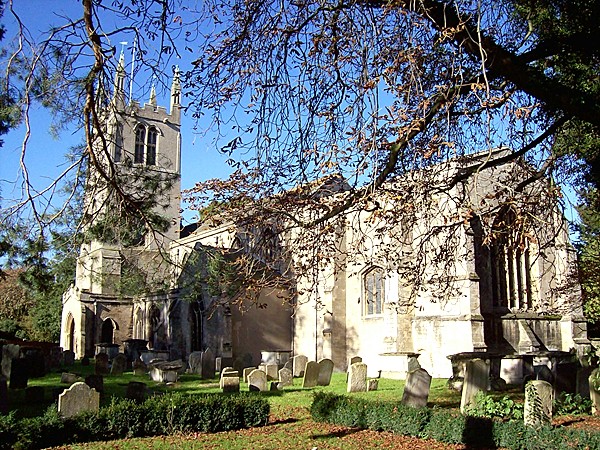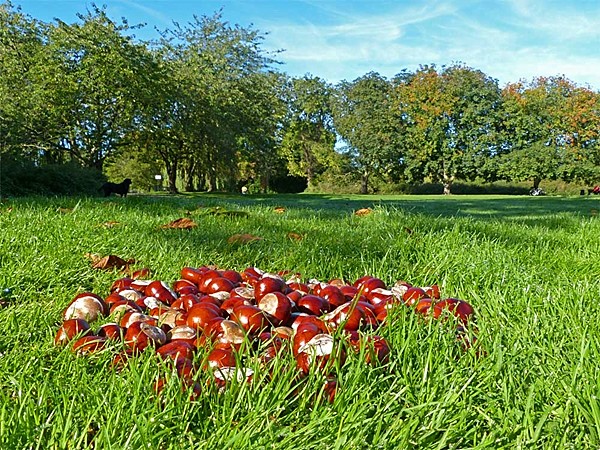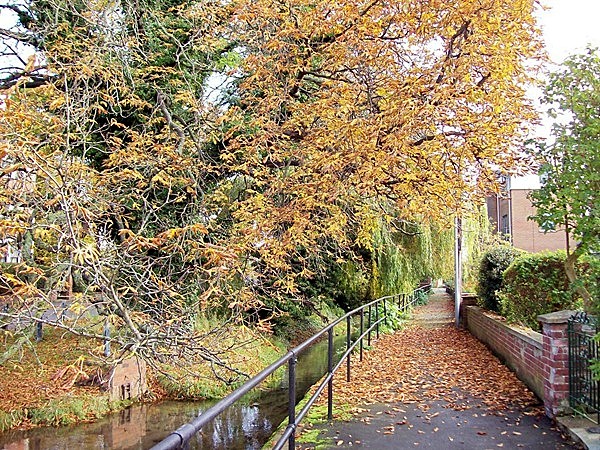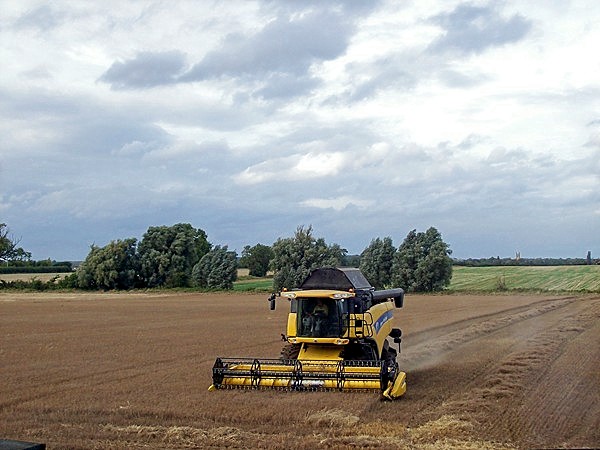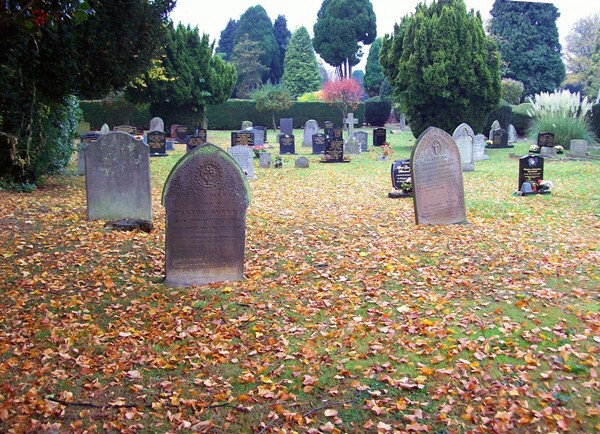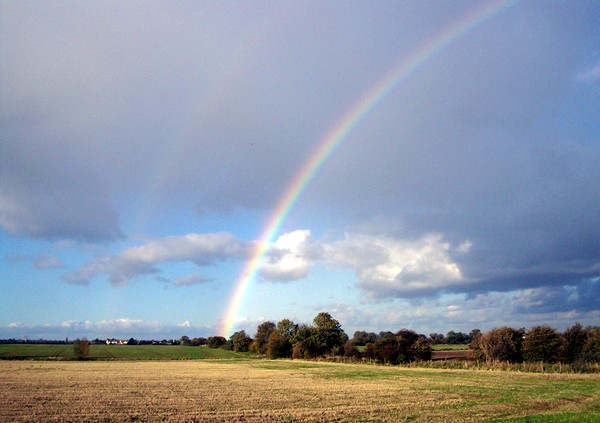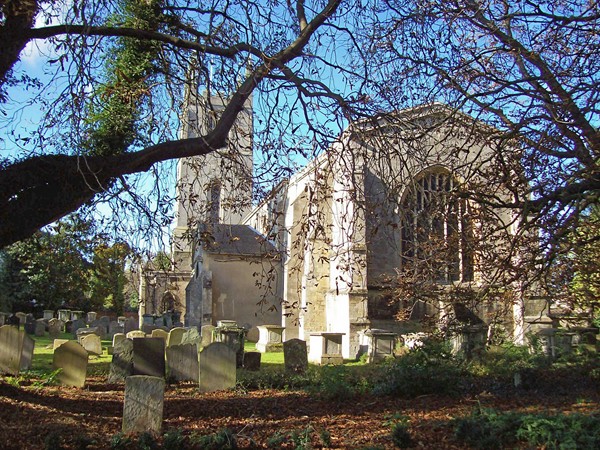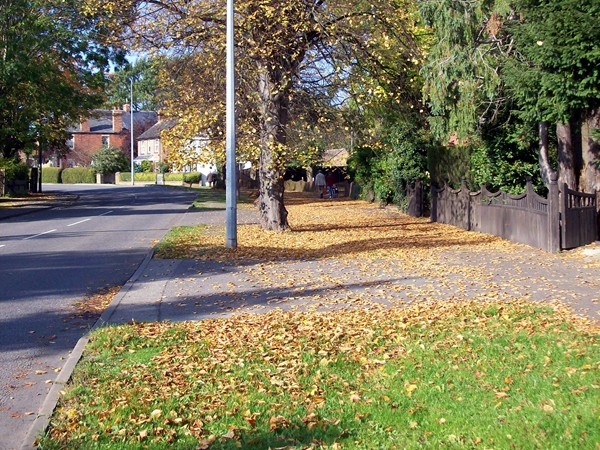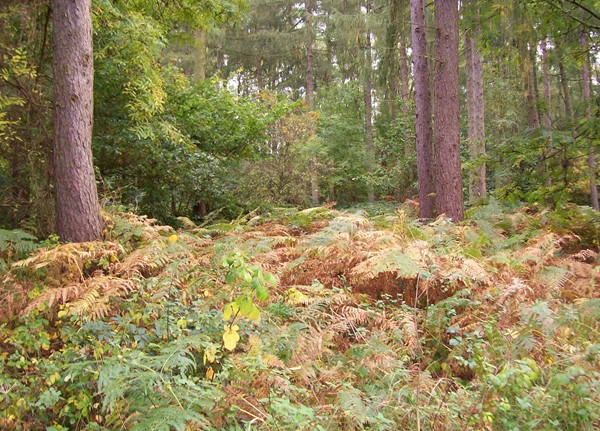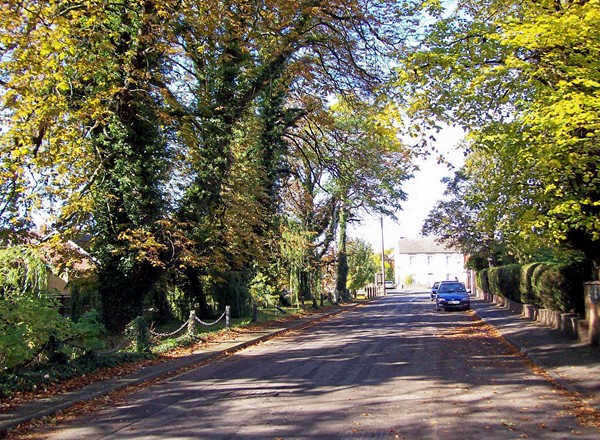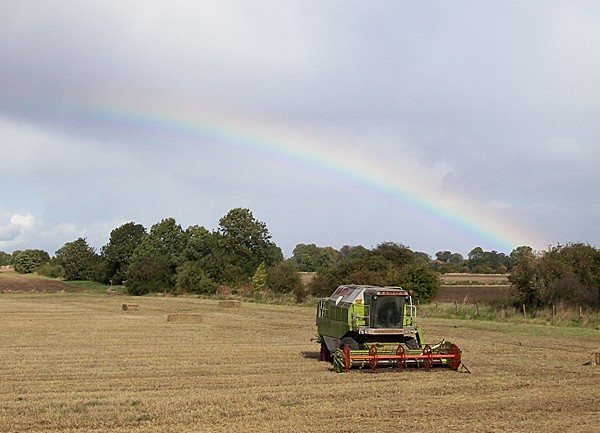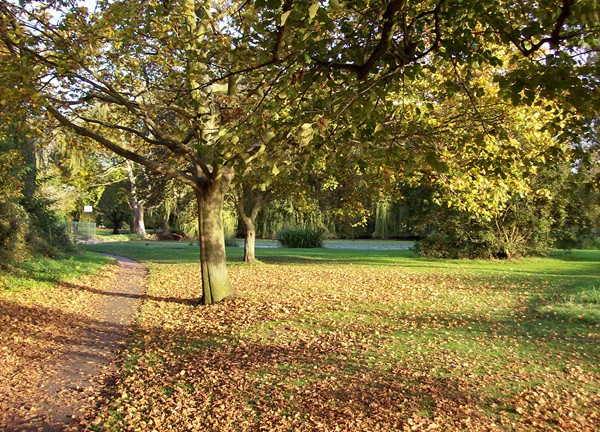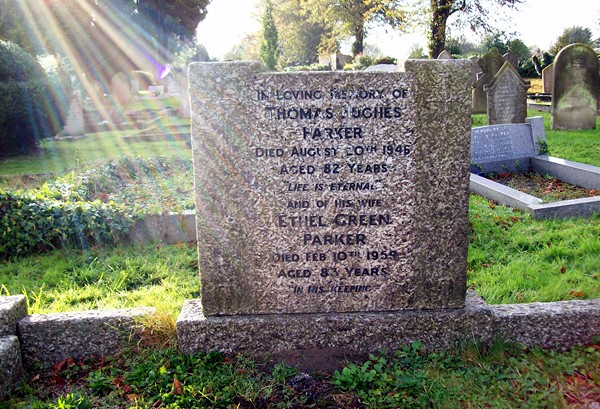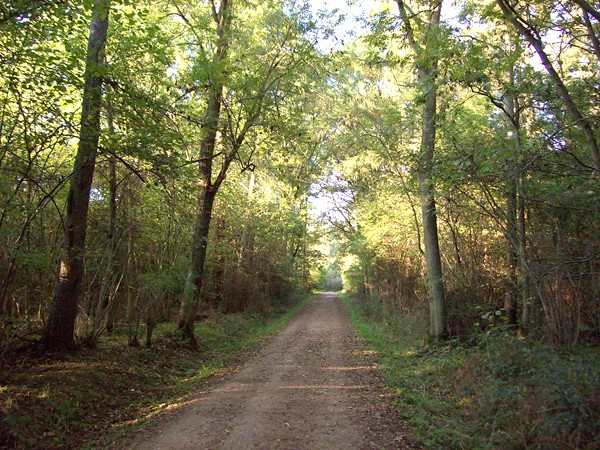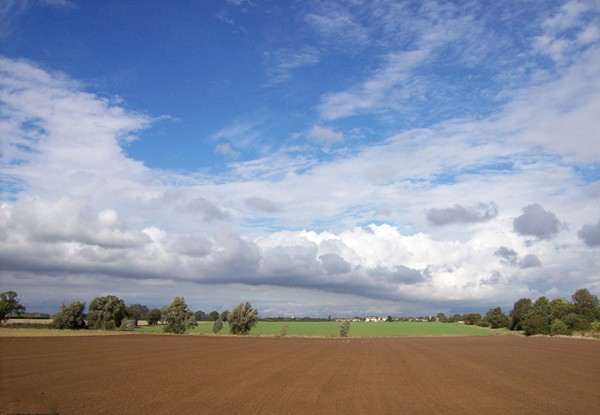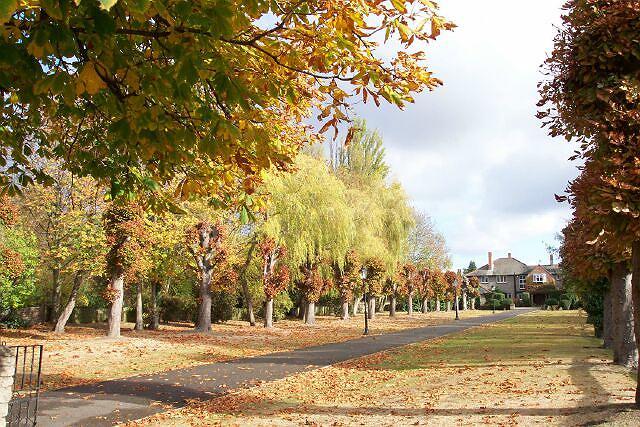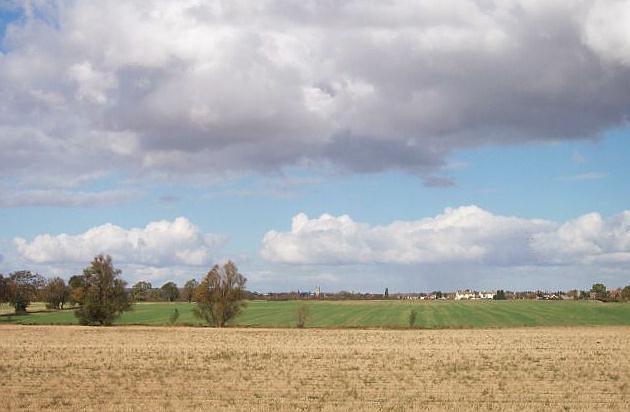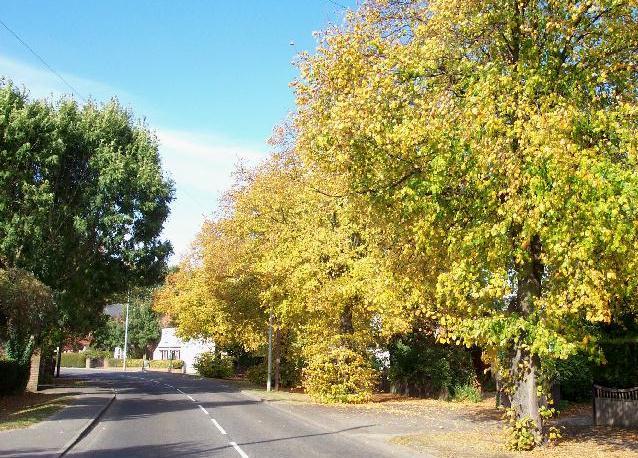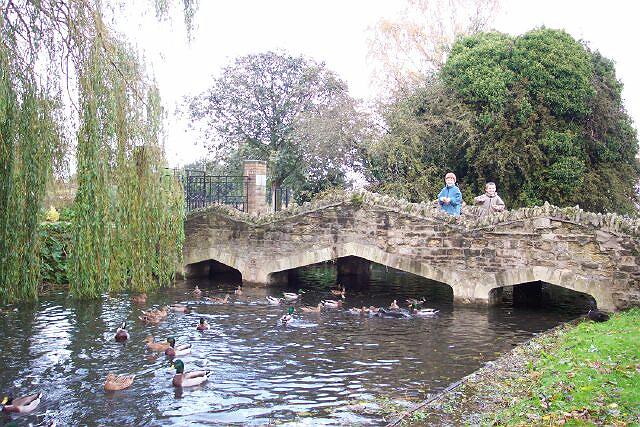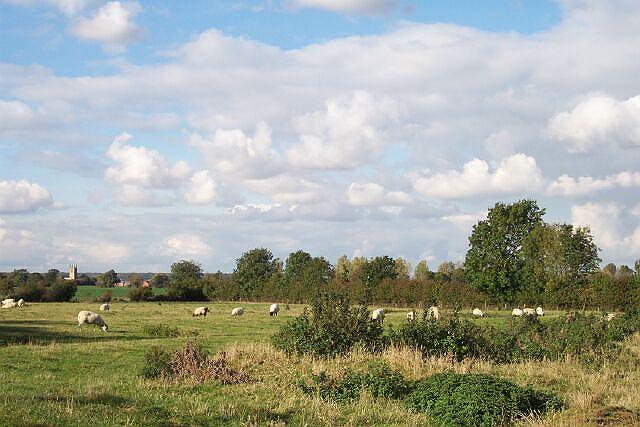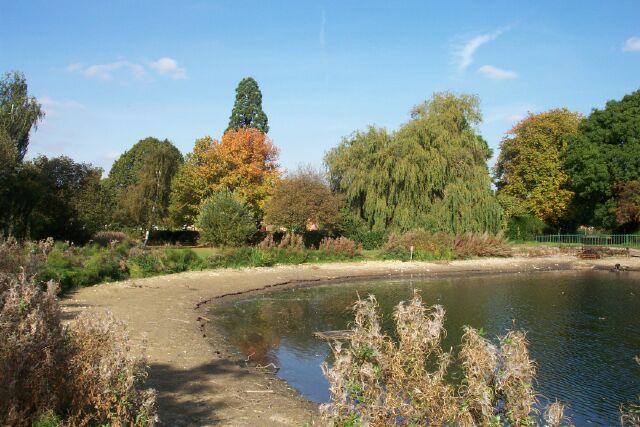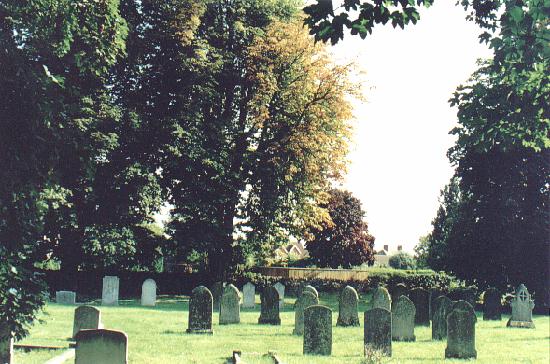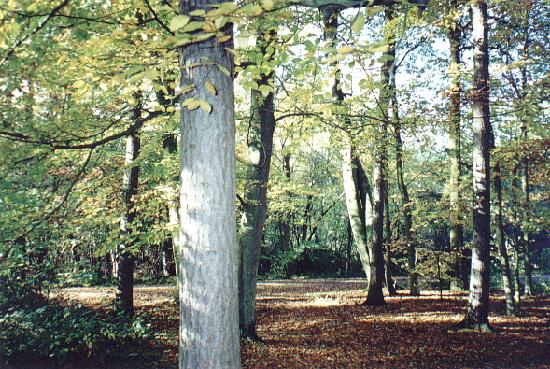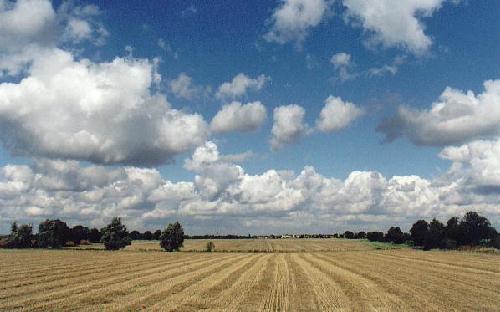|
October
Thursday 24th October 2013: Late October sunshine shows the mellow stonework of the Abbey Church in all of its splendour having endured wind and weather since the 12th century and still standing as a beacon of faith for our fenland community. This view of the building was taken from the most easterly point in the churchyard, now covered with the fallen leaves of ancient chestnut trees while the surrounding tombstones are those of the great and the good who served this town in years past but now lie as forgotten as their endeavours in their cloistered silence as a constant reminder of the feeble grasp we all have on life.
Friday 4th October: One of the delights of boyhood when autumn came was the pursuit of horse chestnuts, plundered from the highest trees in remote locations from where they were dislodged with sticks and stones to be threaded on string and used in the annual game of conkers which occupied our time in the playground and on the pavement. This annual ritual of yesteryear has practically died out along with marbles and hopscotch, and the fallen seed is now unwanted and forgotten in the countryside and in our parks such as here in the Wellhead Gardens where this forlorn pile lies abandoned as a reminder of past pleasures.
Sunday 21st October 2012: The Bourne Eau is largely neglected as it runs through Eastgate and out into the fen but despite its poor condition, the riverside walk below Queen's Bridge in Willoughby Road can be a delightful experience on a sunny day, especially when the trees begin to shed their leaves as autumn takes hold. This footpath, which is bordered on one side by ancient iron railings, was a pleasurable outing in Victorian times but now seen by few people although a little extra work by our local councils and the water authority would soon restore its appeal as a local attraction to be appreciated by visitors and townspeople alike.
Tuesday 2nd October 2012: Linseed can occasionally be seen growing in the fens, a crop that is easily recognised in late spring by its attractive blue flowers but once they have gone the plants begin to turn a golden brown to await the combine. The seeds are used to produce linseed oil which has several uses, both culinary and practical. Changeable weather this year has delayed harvesting but the farmer has been using a massive new machine which completed the task on this fifty-acre field outside my study window in a matter of hours and although rain threatened several times, it held off until the task was over.
Thursday 22nd October 2009: Falling leaves in a graveyard have a particular poignancy because they symbolise the fragility of our existence and although the trees hereabouts will burst into life again next year, there is a sad permanence for those who lie below and can never see another spring. Nevertheless, our burial grounds remain part of our heritage because they contain a record of those who went before and although now totally oblivious of the passing seasons, their tombstones serve as a reminder that they too once lived here and enjoyed the rich russet colours of an autumn day.
Monday 27th October 2008: The rainbow has been part of myth and legend since man first walked the earth and is celebrated today in music and literature as a sign of hope and optimism, a place where bluebirds fly and the skies are always blue. This one appeared after a light shower on a sunny day this week in front of my study window over the fen between Bourne and Dyke village, bringing with it the usual mystery and mystique of nature and perhaps, as we did in my boyhood, even someone trying to find that elusive quarry, the rainbow's end and the promise of a pot of gold.
Wednesday 22nd October 2008: Lengthening shadows at midday and a carpet of golden leaves from the ancient chestnut trees in the churchyard of the Abbey Church remind us that autumn is with us although the changing seasons have little effect on those buried here. They are completely forgotten except for their names inscribed on stone and slate tablets fast fading through the effects of wind and weather and a reminder of the feeble grasp we all have on life.
Thursday 16th October 2008: Autumn leaves are everywhere in Bourne and at this time of the year these four roadside limes in West Street always produce a carpet of gold and russet brown underfoot, a beautiful sight for the aesthetic but a curse for elderly pedestrians and road users if the weather turns wet. Unfortunately, this is the price we pay for planting trees in urban areas, creating an annual problem that affects many of our streets but a small inconvenience for the pleasure they give in all seasons and even now, who can possibly complain about such a delightful scene.
Wednesday 15th October 2008: Bourne Wood is redolent of the dank smell of autumn as the leaves begin to fall and the bracken turns its seasonal shade of golden brown to remind us that another year will soon be closing. The sound of birdsong is now a rarity and apart from an odd squirrel scurrying to and fro collecting acorns to stock its larder for the coming winter, few animals are about because this is a time of preparation for hard times to come. But walkers still frequent the main paths for their love of the forest is undiminished by the damp and early darkness of the advancing winter and will still be seen striding out even on the coldest days to come.
Thursday 9th October 2008: Autumn shadows at midday lengthen in Eastgate, one of the oldest parts of Bourne that has been an attractive place to walk in past times but residents have begun to complain that it has taken on a neglected air with weeds in the streets, the chain link fence along the river bank disintegrating, the waterway choked with weeds and as the season advances, fallen leaves in the street are creating a hazard for traffic. They are asking the local authorities to carry out maintenance work to improve the area as a matter of urgency and to trim back the trees that overshadow the road and let in some light on an area which they think has been totally forgotten.
Wednesday 1st October 2008: Continuous bad weather delayed the corn harvest by several weeks but finally the sun burst through towards the end of September and enabled the combines finish the task, producing an excellent yield in the process. But hardly had the last trailer full of grain left the field outside my study window and the straw baler completed its work than the rain started again, occasional showers that produced a magnificent rainbow across the sky, a reminder that all had been safely gathered in for another year.
Thursday 18th October 2007: The days are shortening and the shadows lengthen as autumn arrives and spreads its golden colours around the town. Here at the Wellhead, trees are shedding their leaves for another year creating a carpet of russet shades in red, brown and yellow that crunch under foot as you walk by, a reminder of the onset of winter and that soon the old year will be fading. The seasons arrive with such regularity that we tend to overlook their importance but in a temperate climate such as this we must remember that they are a sign of annual change and renewal and we should rejoice in the sights and sounds they bring.
Tuesday 9th October 2007: I took this rather surprising picture late this afternoon after a day of dark skies and continual rain but the clouds cleared and the weather brightened up shortly before 5 pm and so we went to the town cemetery to do some research on the Rev Thomas Parker who was pastor at the Congregational Church in Eastgate, now the United Reformed Church, from 1905-08. He subsequently retired to live in Nottinghamshire where he died in 1946, aged 82, but both he and his wife Ethel, who died in 1959, aged 83, chose to be buried here. By all accounts he was a deeply religious and pious man and my photograph of their grave, which resembles an evangelical scene from Victorian times, could be construed by many believers as a sign of his faith, the biblical texts on the tombstone reading "Life is eternal" and "In His keeping", whereas my camera merely captured a freak shot showing the rays of the late afternoon sun.
Tuesday 24th October 2006: Forest tracks have an air of optimism and of mystery, especially in autumn when lengthening shadows add to the prospect of hidden creatures and secret places. In Bourne Wood, the main path beckons the curious walker to find out what lies ahead as falling leaves of brown and gold rustle underfoot, a sign that winter approaches and the last rays of the day's sunshine break through the canopy to provide shafts of light along the way. The seasons come and go with a comforting regularity and the mellow fruitfulness of late October is a reminder that the countryside is closing down for the year but will be back next spring for yet another colourful display.
Monday 9th October 2006: It was a day of changeable weather with dark skies and the threat of rain and even a hint of mist on the horizon, serving as a reminder that autumn is not far off. But towards lunchtime, the sun broke through and for a brief interlude, we were treated to one of those magnificent cloudscapes that you only see in the fens, huge banks of white cumulus scudding across the sky and changing in pattern and intensity with every passing second. This particular scene lasted only a few minutes and I was lucky to capture it on camera but it had soon disappeared and the grey murkiness of an October day returned.
Saturday 1st October 2005: There was a time when turning this fifty acre field between the north of Bourne and Dyke village would have taken several weeks for the solitary ploughman and his horse-drawn single furrow implement but times have changed and mechanisation means that powerful tractors pulling multiple blades can slice through the soil like a chocolate cake and finish the job in a day, even working into the night by headlights if necessary. Yet some old sights never fade such as the flocks of birds that follow to feed on the worms and grubs thrown up by the fresh soil, providing a feast for thousands of many species, seagulls predominating with crows, lapwings, pied wagtails, starlings and blackbirds close behind. Ploughing is the most familiar of all farming activities, tilling the soil in readiness for a new crop and therefore a reminder that we still depend on the earth for our existence and should not abuse its productivity.
Sunday 23rd October 2003: One of the last remaining open spaces in North Road is the paddock and surrounding grassland at the Croft, an imposing house built in 1922 as a family home by Richard Boaler Gibson, a local corn merchant. The present owner is intent on selling the land for residential development and despite two unsuccessful attempts to obtain planning permission, in 1993 and 1994, a third application has been submitted to South Kesteven District Council, this time for 37 new homes on the site. The house is approached from the main road by a driveway with an avenue of magnificent horse chestnut trees but there are fears that they may be felled and that wildlife in the area, which includes foxes, squirrels and many species of birds, will be driven out. There have been a mass of objections, including those from Bourne Town Council and the Civic Society, because of the traffic and environmental issues involved, and the application is due to be decided by the council's planning committee next month but in view of its past record on such issues, the prospects do not look good.
Monday 20th October 2003: One of the beauties of the fens here in South Lincolnshire are the glorious skies we see in autumn and because the landscape is so flat, we get an uninterrupted 360º panoramic view which on a day such is this is ever changing and full of interest. The billowing cumulus clouds move slowly across it like ships at sea and, as here, bringing an occasional light shower with long bursts of sunshine and even an intermittent rainbow. This is the view from my study window, showing the countryside between the north of Bourne and Dyke village. The far field has been sown with winter wheat and the green shoots are already pushing through while the land in the foreground awaits the plough and still has its covering of corn stubble from last month's harvest. Those who are not lucky enough to live in the countryside do not realise that the land is constantly occupied with food production, from preparation and seeding, to growth and harvest, and, as here, the cycle then begins again.
Tuesday 15th October 2003: Lengthening shadows at mid-morning are a sign that autumn is with us for although the sun still rises with a trace of its summer strength, it sinks lower in the sky as the days go by and if we doubt the changing seasons, then look around at the trees that are taking on new colours before shedding their leaves for another year. The russet shades of gold, yellow and copper brown are everywhere as a reminder that summer has faded and winter is on its way and this dramatic transformation can be seen even in the streets. One of the most beautiful scenes on a sunny day is here in West Road, between Kesteven Way and Westminster Lane, where a row of four roadside lime trees have taken on their seasonal coat to the delight of all those who pass this way.
Wednesday 30th October 2002: The Bourne Eau in South Street is a popular place for children because of the large number of mallard that can be found on the water here and most have learned to live with the attention they receive and swim towards visitors in the hope of getting a few tasty morsels. It is half term from school this week and so our young visitors have been more numerous than usual, among them Thomas Edwards, aged 7, (left) and his five-year-old brother Joshua, who arrived with their grandmother Mrs Joyce Turner to feed the ducks and they were not disappointed as dozens flocked round to find out what they had brought for them. Feeding the ducks is one of our first contacts with nature and the thrill of seeing strange birds flocking to our call, enticed by a few pieces of bread, is one of those childhood pleasures that remains in the memory through the years and so we who have grown up enjoy it all over again when we see others do as we did sixty or more years before.
Saturday 19th October 2002: There are many attractive villages around Bourne and all are worth a visit because they invariably produce something interesting, a building or a garden, the church or the village hall, or merely a view of the countryside that you have never seen before. We visited Dyke village today, one mile north of Bourne just off the main A15, and after lunch at the Wishing Well, the 18th century hostelry, took a stroll round. A farm track leads off the village green in the direction of Morton village and although it peters out into a meadow, it provided us with this peaceful pastoral scene of sheep safely grazing under an autumn sky. In the distance on the left is the 15th century tower of St John Baptist church while the trees along the hedgerows have taken on the autumn tinges of brown and yellow. This was a scene reminiscent of the painter John Constable for little has changed in this part of the countryside since he recorded the landscape of England 200 years ago. Wednesday 16th October 2002: Autumn leaves are everywhere in Bourne but they provide one of the prettiest street scenes here in Woodland Avenue, part of the housing development built to the west of the town during the 1970s. This is a particularly attractive residential area with large houses built around a grassed area lined with trees, mainly horse chestnuts, and in October the golden brown leaves fall and crunch underfoot as you walk past. The falling leaves are also a reminder that the conker season is upon us for they are here in abundance and are regularly collected by schoolboys for their playground games but no matter what your age, who can resist picking up a few of these highly polished, ripe brown nuts to take home and place on the study desk as a reminder of the pleasures that we pursued in our boyhood.
Wednesday 9th October 2002: The water level at St Peter's Pool recedes further as the dry spell continues for although there has been no rain for more than a month to replenish our underground supplies, this valuable resource is still being pumped out at the rate of more than four million gallons a day to supply homes as far away as Peterborough. The town of Bourne was founded on the seven springs that rise here from the limestone strata but despite warnings over the years that misuse will cost us dear, we carry on with the reckless extraction that leads to this sorry sight. In 1909, Joseph J Davies, headmaster of the Abbey Road Council School and a local historian of some distinction, wrote: "Bourne's most valuable natural asset is its unrivalled supply of the purest water in England but it behoves us to conserve this grand underground store, and to guard against reckless prodigality of this natural source of wealth." There was a time when the guardianship of this commodity was in the hands of the people of Bourne but since 1962, the undertaking has been controlled by Anglian Water and so our supplies are piped elsewhere. For a glimpse of what the pool looks like in normal times see St Peter's Pool
Friday 19th October 2001: The English country churchyard is known as God's little acre because that is usually its size and it was built in His name. But whether you are a believer or not, autumn is the perfect time and this is the perfect place for reflection because it is here that you can see the passing of the year and the memorials to those who went before. Too many churchyards have become neglected and overgrown and it is a delight to find one so well kept as that beside St Stephen's Church at Carlby, four miles south west of Bourne, where the trees have begun to take on their russet tinges before the leaves start to fall and a glimpse of the inscriptions on the grey headstones reminds us of the feeble grasp we all have on life for one of them says: "Oliver Smith died suddenly in his chair on 21st May 1872, aged 54 years. In the midst of life we are in death."
Thursday 11th October 2001: Autumn in Bourne Woods is a magical time as the leaves turn from their summer green to the varying shades of russet and those that have fallen, rustle underfoot as you pass. Grey squirrels that live here in great numbers can be seen scurrying about their business collecting acorns to see them through the winter ahead and for those who walk these paths quietly and with care, you may catch a glimpse of the fallow deer that have made these woods their home, crossing the path ahead in single file, but they remain elusive and wary of intruders and take flight when they are disturbed. The seasons are like a wheel forever turning and soon the leaves will have gone and the woods that we have enjoyed all summer for their delightful freshness will become a dormant place as most small animals hibernate and the trees protect themselves against the possibility of severe winter weather although even now, if you look closely, you will find signs of the new life that we can expect to see next spring.
Thursday 26th October 2000: We are now into autumn and here in the South Lincolnshire fens, farmers are preparing their land for another growing year, another crop. This is the latest picture taken from my study window from where I can see the farming activity in the countryside throughout the year between the outskirts of Bourne and Dyke village, from springtime to summer and autumn into winter. Here is one of those glorious fenland skies that we see at this time of the year over corn fields that have just been harvested and now await the plough and soon the seed drills will be planting their next crop of winter wheat or barley and so the cycle of food production begins again, a reminder that the changing seasons are markers for our own life span. Saturday 30th October 1999: A phenomenon of modern agriculture is that large tracts of farmland remain green throughout the winter months because of the autumn sowing of cereal crops. These fields between Bourne and Dyke village that I can see from my study window were planted with winter wheat during September and October and the green shoots have already broken through. Frost and snow in the coming weeks will harden the plants and produce a higher yield than those varieties planted in spring.
Sunday 25th October 1998: Autumn in the Wellhead Gardens is a most colourful sight and the best time to see it is early on a Sunday when there is no one else around. This was the morning that the clocks went back and I was up at 7 a m to capture this scene of falling leaves and bright sunshine. I had the park entirely to myself except for a lone jogger who hardly noticed me as he puffed and panted his way along the path. As I was leaving, one of the park staff arrived with his brushes and cart to start clearing up some of the leaves that had been blown down by high winds during the night and we chatted for a few moments about the marvellous colours that this time of the year brings to the urban landscape.
Go to: Main Index Villages Index |
